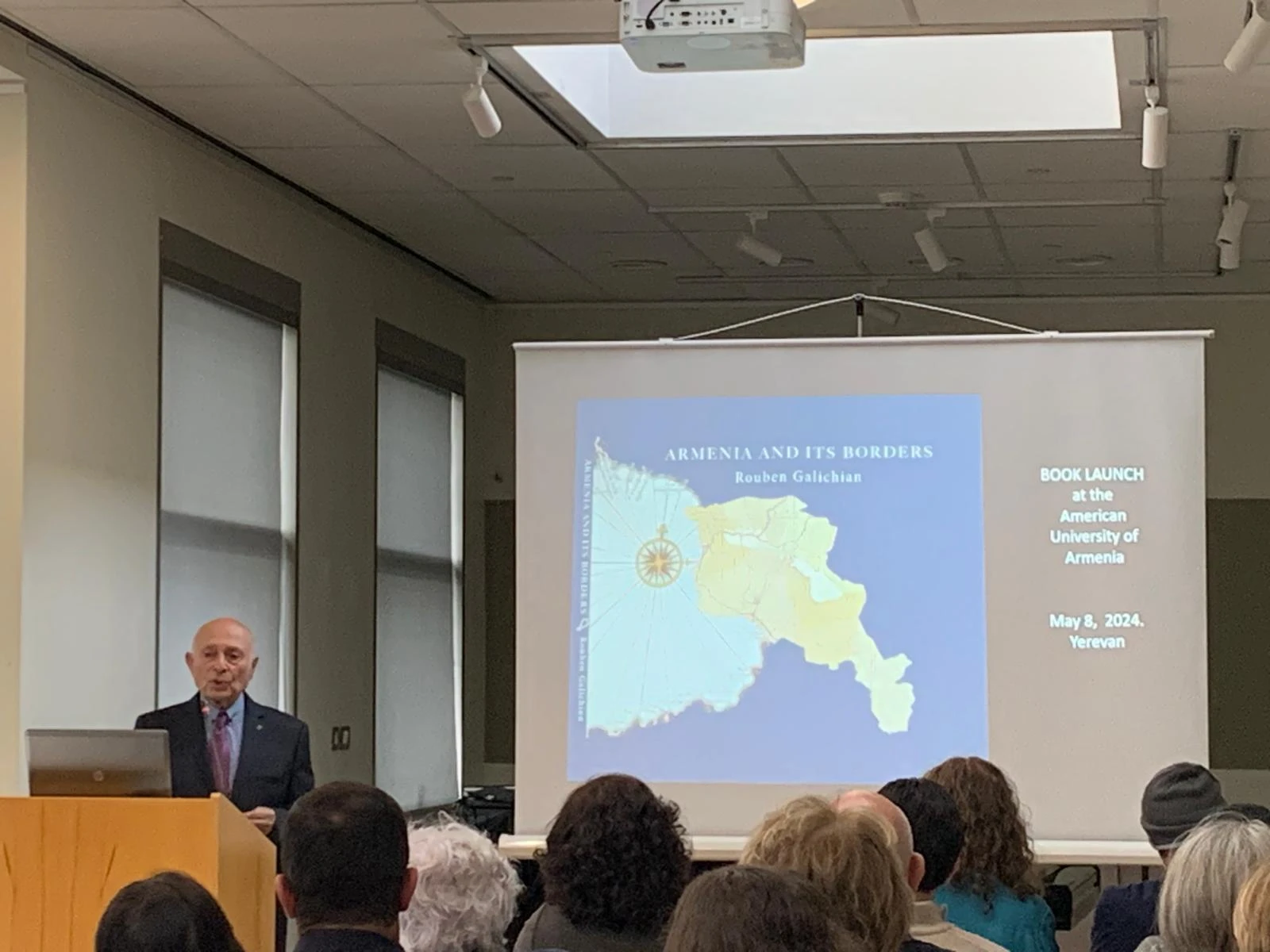“Armenia and its Borders” arrives at a critical time marked by heightened political tension and ongoing debates over the border demarcation and delimitation process between Armenia and Azerbaijan following the loss of Artsakh. This work, published by the Antares Publishing House and sponsored by the Tufenkian Foundation, promises to shed light on the intricate historical, geographical, and political complexities surrounding Armenia's boundaries.
Laurie Alvandian, Director of the AUA AGBU Papazian Library, opened the event with welcoming remarks and underlining the significance of the newly published book. Armen Martirosyan, Director of Antares Publishing House, also addressed the audience, emphasizing the importance of bringing such a significant work to light. He commended Galichian for his thorough research and dedication.
Bedo Demirdjian from the Tufenkian Foundation highlighted the foundation’s commitment to supporting scholarly works that preserve and elucidate Armenian heritage. “We are proud to support Mr. Galichian’s invaluable contribution to our understanding of how Armenia's borders have been defined,” Demirdjian remarked.
Rouben Galichian, a respected figure in the field of cartography, has dedicated his career to the meticulous study of Armenia’s geographical history. During the presentation, Galichian captivated the audience with an overview of his findings, emphasizing the importance of historical context in contemporary political discourse. He underscored the necessity of understanding Armenia's historical borders to effectively address current challenges and assert the nation’s position on the global stage.
You can watch Mr. Galichian's presentation here.
The event included a lively Q&A session, where attendees engaged with Galichian on various aspects of his research. The dialogue fostered a deeper understanding of the geopolitical issues facing Armenia today and highlighted the crucial role of historical knowledge in shaping future policies.
"Armenia and its Borders" is now available for purchase at major bookstores in Yerevan, Armenia. This book is poised to become an essential resource for anyone interested in the historical and political landscape of Armenia.
